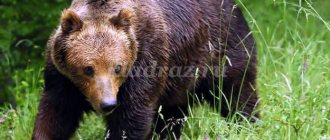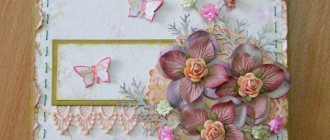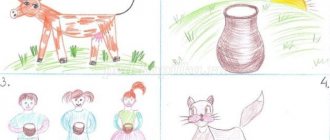The role of animals in the biosphere
The function of animals in the biosphere is that they participate in the cycle of substances and maintain it in a state of equilibrium. By consuming plants, animals stabilize biomass production. By carrying pollen, spores, and plant seeds, animals contribute to their reproduction. More than 80% of flowering plants cannot self-pollinate. Insects and birds come to their aid in this.
Sea creatures
Some species of marine animals, in particular mollusks, are capable of concentrating certain chemical elements in their exoskeleton. This plays an important role in stabilizing the level of mineral compounds (salts) in the waters of lakes, rivers, seas and the World Ocean as a whole. Currently, a person receives up to 10% of animal proteins only from fish and seafood.
Animal Kingdom: general characteristics
The science of the animal world is called zoology. It examines not only the structure and development of living beings, but also behavioral characteristics, methods of reproduction and settlement. What is important is the origin and evolutionary processes by which each species changed over thousands of years.
The animal world is the kingdom of heterotrophic eukaryotes. The signs of the animal kingdom are numerous. The most significant features are reflected in the diagram.
Signs of the animal kingdom:
- heterotrophic type of nutrition (not able to independently produce organic matter);
- development of the musculoskeletal system;
- the ability to move and live in a certain ecological niche;
- growth limited by species capabilities.
To this list it is worth adding features of the animal kingdom:
- the presence of an external or internal skeleton (musculoskeletal system);
- weak ability to regenerate;
- the ability to live in different habitats;
- movements and migrations, “capture” of new territories;
- manifestation of behavioral reactions.
Note: Zoology is divided into 2 large sections: vertebrate zoology and invertebrate zoology. The concept of “invertebrates” was introduced into biology by J.B. Lamarck. These include all biosphere living organisms with the exception of the Chordata type.
Animals are characterized by the following vital functions :
- Metabolic processes include the entry of substances into the body, decay, synthesis of new cellular structures and substances, and the removal of unnecessary breakdown products.
- Continuous or periodic supply of nutrients necessary for life. Most organisms need proteins, fats, carbohydrates, and vitamin and mineral complexes.
- For the oxidation of substances during metabolism, oxygen is required (rarely other elements). Without oxygen breathing, vital processes stop and the body dies.
- Removal of decomposition products: urea, salts, compounds waste during metabolism.
- Reproductions of their own kind. Animals reproduce asexually and sexually.
- An increase during life in mass, volume, and overall body size to specific limits associated with the species.
- The connection between growth and differentiation processes as a result of development that occurs along direct and indirect paths (complete or incomplete transformation).
- The ability to respond to changes in the external environment with a general state or irritability.
Note: Animals represent part of the biosphere. They are included in the general cycle of nature, enter the food chain and create ecosystems. They have mastered the ecological niches existing in nature, so they are found on land, in water and in the air.
The animal kingdom looks like this:
Important: Among the animal world, a formed internal skeleton is characteristic only of chordates. Thanks to classification, changes in development (progress or regression) that occurred as a result of evolutionary processes are visible. For thousands of years, animals have adapted to environmental conditions, improved or degraded in order to survive.
Unicellular organisms
Cells capable of leading an independent lifestyle are characterized by the following features:
- the ability to move due to cilia, flagella, pseudopods (there are immobile protozoa);
- varied body shape, which can change in some (ciliates);
- sizes from 2-4 microns to 5-6 cm (foraminifera);
- halving (majority);
- heterotrophic nutrition (most);
- breathing through the pores of the outer cell membrane;
- linear DNA located in the nucleus.
These are characteristic features inherent in most single-celled organisms. But, as with any rule, there are exceptions. In ecosystems, protozoa play the role of parasites, saprophytes and predators. Let's look at the signs of typical representatives of protozoa:
The protozoan cell is built according to a general principle, but its peculiarity is the ability to live and function separately. The internal contents are semi-viscous cytoplasm, in which organelles characteristic of most cells “float”. There are no plastids needed for photosynthesis. The cell is equipped with one or more nuclei, which are divided in half by mitosis, giving ½ of the hereditary material to the daughter cells.
Rice. 1. The structure of an animal cell
Scheme “Features of an animal cell”
Note: Protozoa live, feed and reproduce in an environment favorable to their existence. When it changes, when conditions change and become “harsh,” the cells survive them in the form of cysts, becoming covered with a thick membrane and minimizing metabolic processes.
Looking for food
Because animals feed on other organisms or their organic waste products, they must move around in search of food. For movement, animals have special adaptations, for example, pseudopods in amoebas, flagella in flagellates, cilia in ciliates and free-living flatworms, legs in mollusks, wings and legs in insects, limbs in amphibians, reptiles and mammals. And birds, along with their limbs, have two wings.
Example of a food chain
Multicellular organisms
Consist of differentiated cells capable of performing specific functions. Such cells are united into tissues. They are built the same and perform the same role. Organs and organ systems are formed from tissues and a complex animal organism arises.
There are 4 main groups of fabrics:
- nervous;
- connecting;
- epithelial;
- muscular.
Animals are divided into 2 groups according to the presence or absence of a skeleton:
- chordates
- invertebrates
The level of organization in multicellular organisms is much higher compared to their unicellular “counterparts”. The body functions as a whole and consists of organ systems.
Animal organ systems:
- Musculoskeletal;
- Respiratory;
- Digestive;
- Nervous;
- Blood;
- Endocrine;
- excretory;
- Sexual.
Thanks to intercellular interaction, metabolism occurs. In the process of nutrition and respiration, cells are saturated with substances necessary for life, which are oxidized due to oxygen. This is how intracellular connections and structures are built.
Due to the size of multicellular organisms, metabolic processes and energy conversion processes occur according to a specific “schedule”. Multicellular organisms are complexly organized and respond to external changes thanks to the nervous system. Touch, smell, and natural instincts give them advantages in the struggle for survival.
A number of multicellular organisms are characterized by a symmetrical body. There are:
- Radial or radial, when the body is divided into several planes. It is considered primitive and characteristic of sponges and coelenterates.
- Bilateral or bilateral, when the body is divided into two planes. Observed in most chordates.
Note: Thanks to the developed level of organization, it is easier for multicellular animals to survive in the environment, and their life expectancy increases. This is a new stage that arose during the evolutionary process of the animal world.




